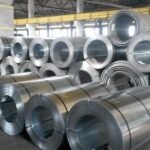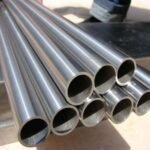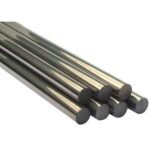Stainless Steel Manufacturer & Supplier
Stainless steel, known for its exceptional corrosion resistance, durability, and aesthetic appeal, stands as a fundamental material across a myriad of industries. At Montex Tubes Industries, we take pride in offering a superior range of stainless steel products in diverse shapes, sizes, compositions, and specifications to cater to the diverse needs of our clientele.
Montex Tubes Industries offers a comprehensive range of stainless steel grades including 201, 304, 304L, 304H, 305, 310/S, 310H, 316, 316L, 316Ti, 317/L, 347, 347H, 410, and 446, ensuring diverse options to meet various industrial needs.



An Overview of Stainless Steel:
Stainless steel chemical composition for all grades is as follows- SS Grades 201 , 301, 304L , 305, 321, 347, 309S, 310 S, 316L, 317L, 317 LMN, 904 L.
Stainless steel is an alloy of iron, chromium, and other elements that exhibit exceptional properties. This versatile material is renowned for:
- Corrosion Resistance: Stainless steel’s chromium content forms a passive layer that resists corrosion, making it ideal for various aggressive environments and applications.
- Strength and Durability: It offers excellent mechanical properties, high strength, and durability, ensuring longevity and reliability in diverse conditions.
- Hygienic Properties: Its smooth, non-porous surface makes it easy to clean, making it a preferred choice in food, medical, and pharmaceutical industries.
- Aesthetic Appeal: Stainless steel’s lustrous appearance and finish make it a popular choice for architectural and decorative applications.
Shapes and Sizes:
At Montex Tubes Industries, we offer an extensive range of stainless steel products in various shapes and sizes, tailored to meet the specific needs of different industries. Our product range includes:
- Tubes and Pipes: Available in different diameters, wall thicknesses, and lengths suitable for a wide array of applications in construction, automotive, and more.
- Sheets and Plates: Varying in thickness and size, catering to diverse construction, manufacturing, and architectural needs.
- Bars and Rods: Offered in different diameters and lengths for machining, construction, and structural applications.
- Fittings and Components: Customized fittings and components crafted to precise specifications for integration into various systems.
Composition and Specifications:
Our stainless steel products are meticulously designed and manufactured with adherence to rigorous quality standards. Typical compositions may include:
- Iron (Fe), Chromium (Cr), and varying proportions of other elements like Nickel (Ni), Molybdenum (Mo), and others, depending on the grade and specific requirements.
Specifications of our stainless steel products conform to international standards and can be customized to meet individual customer needs. These may include:
- Compliance with ASTM, ASME, or other industry standards for chemical composition, mechanical properties, and manufacturing processes.
- Mechanical properties ensuring durability and performance in various applications.
- Precision in dimensions, tolerances, and surface finish to meet specific application requirements.
Stainless Steel Composition
| Material | Grades Supplied | Main features | Advantages | Disadvantages |
|---|---|---|---|---|
| Austenitic Steel with Manganese | 201 |
|
|
|
| Austenitics | 301, 304L, 304, 305, 320, 321, 347, | |||
| Austenitic Steel with Molybdenum | 316, 316L, 316Ti, 904L | |||
| Ferritics | 409, 410S, 430, 430L, 430Ti (439), 441, 444 |
|
|
|
| Martensitics | 410, 420, 431 |
|
|
|
| Precipitation hardening | 17/4PH, 17/7PH |
|
|
|
| Duplex | 309, 310 |
|
|
|
| * cold working of the less alloyed grades will induce structural changes leading to increased levels of magnetism. **Super Austenitics, Super Ferritic and Super Duplexes are available by request | ||||